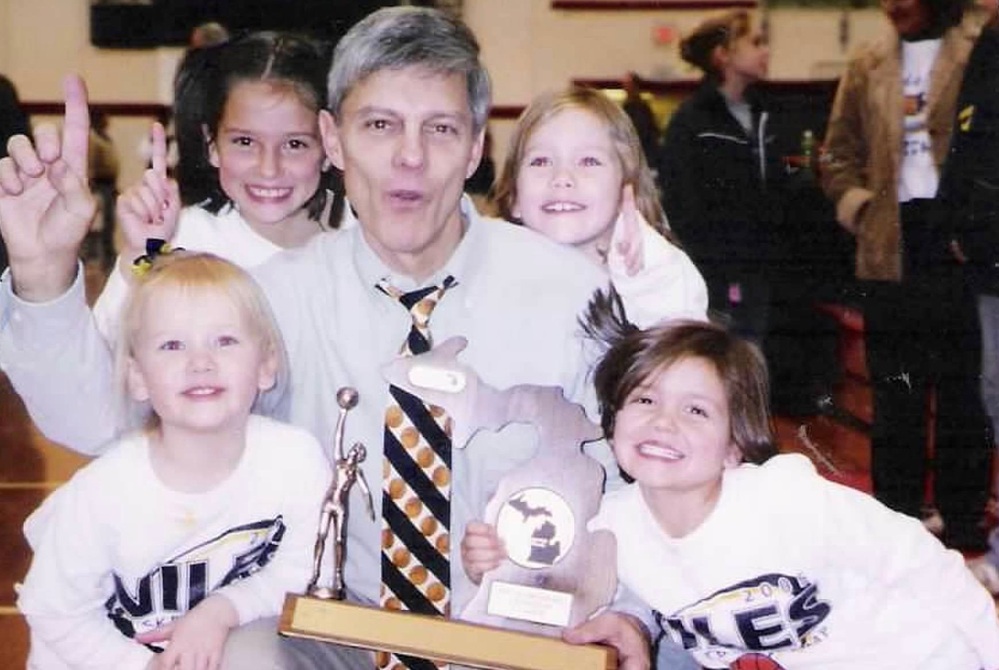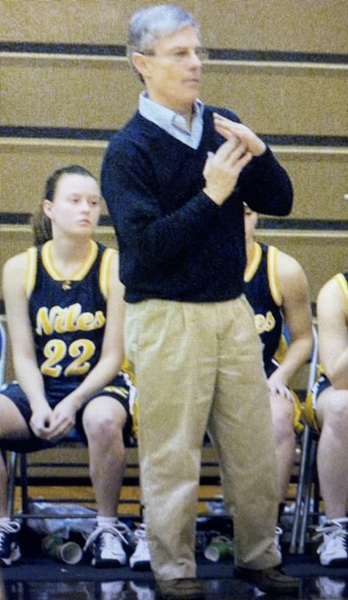
Turnaround Coaches: Study their Steps
April 27, 2016
 By Scott Westfall
By Scott Westfall
MSU Institute for the Study of Youth Sports
Turnaround leadership is often a popular topic within sports conversations, as many coaches are revered for their ability to transform a struggling team into a “winner.”
Turnarounds often are discussed in platitudes such as, “That coach has what it takes to turn this program around.”
While often talked about during the offseason, especially in the face of coaching vacancies, turnarounds are difficult to achieve. After all, if transforming a failing team into a successful one were an easy task, there would not be such an abundance of teams that struggle year-in and year-out.
As much as turnaround coaches are celebrated for their abilities to turn a losing program into a winner, very little scientific research has been devoted to analyzing coaches who have proven themselves as turnaround specialists. The steps and intangibles necessary for achieving a coaching turnaround have remained undetermined as this topic had never been examined from a scientific perspective – until now.
For the past year and a half, I have devoted the majority of my time to researching turnaround leadership in high school coaching, undertaking this study as the topic of my doctoral dissertation project. Research participants in this study included 11 high school football coaches from the state of Michigan who led dramatic turnarounds at their high schools within the last decade. The criteria for participant selection were:
• Prior to the coach’s arrival or appointment as head coach, the team finished (at least) three of the previous four seasons with a losing record (below .500 winning percentage), including a losing season immediately before the coach’s arrival or appointment.
• Within five seasons of the coach’s arrival, the team enjoyed (at least) three winning seasons (above .500 winning percentage).
Before their turnarounds occurred, these high schools had not experienced a winning season (on average) in 7.2 years, while five of the 11 schools had never qualified for the MHSAA Playoffs. However, upon being hired, the average time it took the coaches to achieve a winning record was 1.73 seasons. Moreover, the average time it took the coaches to qualify for the MHSAA Playoffs was 1.82 years. On top of this, each of the 11 teams qualified for the playoffs within three years of hiring their new coach.
The circumstances these coaches faced when they arrived were challenging to say the least, as all of the coaches entered a negative situation with poor team culture. These situations were characterized by losing streaks, cancelled seasons, dilapidated facilities, poor role models on the previous coaching staffs and a significant amount of parental pushback. Players and community members often were embarrassed by their football program. One coach described the situation by recounting, “During that time they were a doormat; everybody’s homecoming, a laughing stock. They were like the Bad News Bears.” Additional problems included low numbers, very little player development, and a low amount of commitment to the overall program.
One coach that I interviewed compared entering a turnaround situation to building a well. He stated, “You may not have success on the surface initially, but if you dig nice and deep and build the well right, there is water down there. It’s going to be some work and it might not come up right away – it takes some pumping. But if you build it right, it will happen.” In this article I will attempt to encapsulate 16 months of research, 191 pages of interview transcriptions, 2,278 miles driven across the state of Michigan, and countless hours spent with 11 turnaround coaches, in order to present to you the nucleus of what it takes to turn around a failing high school program.
The coaching philosophies of the majority of the coaches were characterized as “educational athletics.” This involved coaches striving to do things the right way, viewing their job as an extension of the classroom, implementing a character development program, and using football as a vehicle to teach life skills to players. Furthermore, their greatest strengths were revealed to be coaching/leadership skills, along with the ability to develop strong relationships with their players.
Coaches unanimously agreed that upon their arrival immediate changes needed to be made to the team’s culture. These changes included prioritizing team workouts, altering visible elements like the organization of practices, offensive and defensive schematics, team logos, along with placing positive role models in front of the players. Other changes to team culture happened through improved coach-athlete relationships, giving players a better football experience, and purging the program of negative people. One coach used the term, “Weeding the roses,” which means getting rid of the negative people in the program in order to let the better parts grow and prosper.
All of the coaches developed some type of vision for their program. The most common visions involved transforming their team into a top-level program, and for their players to conduct themselves as quality human beings. Winning games, competing with the best teams in their division, and playing for MHSAA championships marked becoming a top program. While winning was a major component of the coaches’ visions, developing quality human beings was revealed to be just as essential. This was evident as several coaches remarked that their most well-behaved kids were also their most productive players, and that doing things right in school and in the community often equates to wins on the football field.
To build upon their visions, each of the coaches formulated some type of plan or “blueprint” to execute their turnarounds. The majority of the coaches’ plans were constructed around developing positive coach-athlete relationships and employing off-season strength and conditioning programs. While all of the coaches’ plans eventually yielded a great amount of success, not all parties bought into them initially. Some of the players needed to see proof that the team could win games before they were completely sold. In order to create buy-in, the coaches used various approaches to connect with players and sell their plan. These methods included team activities, cultivating relationships with players, continuously selling their vision, hiring/retaining quality assistant coaches, and entering the situation with some sort of previous expertise. Although it may take time, the coaches stressed the importance of the players buying into their vision. As one of them decreed to his team, “The quicker you buy in, the quicker we win.”
Early indicators that a turnaround was commencing included winning games or making significant strides off of the field through positive coach-athlete relationships. Sources of sustained changes included a win streak or an increased level of commitment from the players. Clear indicators that the program had undergone a turnaround included the players adopting a new mentality filled with trust and confidence, along with the program reaching unprecedented levels of success, such as competing with the best teams, completing an undefeated season, and/or making the playoffs consistently.
Character development emerged as a strong component of this study, as 100 percent of the coaches reported that it played a significant role in fostering turnarounds. The coaches also indicated that they deliberately teach character in practice and use coaching as a platform for character development.
In hindsight, an outside observer may assume that these coaches were destined to succeed and their plans were met with little resistance. However, after examining their roads to turnaround success, most of them met several barriers along the way. Early obstacles included widespread mental challenges among players such as a lack of confidence and/or trust. Other early barriers included parental pushback and some cases of overt interference. After the turnarounds were complete, the coaches’ problems did not disappear; they simply changed form, as complacency became the new problem on the team. A potential root of this complacency was the addition of younger players who thought that success would happen automatically simply because of the program’s prior achievements.
The coaches were quick to acknowledge that the turnarounds would not have been possible without the excellent support they received. Their greatest source of help came from their assistant coaches who contributed both tangible and psychosocial support. Tangible support was seen through the assistants performing administrative duties and overseeing strength and conditioning sessions. Meanwhile, psychosocial support came in simple ways, such as listening, giving advice, and showing belief in the head coach. As one coach stated, “You’re only as good as the people you have around you.”
Team turnarounds are not officially complete until a team maintains the success it has built. In order to avoid complacency and sustain momentum, the coaches recommended that coaches and players find ways to keep reaching higher. In order to do this, coaches recommended talking to players about their team goals and what they want their legacies to be. To help sustain momentum, coaches stressed that it is often the little things that matter the most, such as effort, team discipline, player accountability, and positive attitudes.
The strongest theme that emerged from this study was the importance of coach-athlete relationships. All of the coaches believed that relationships are imperative to fostering turnarounds. It was also emphasized that relationships are crucial for sustaining long-term success. In essence, coaches may experience some momentary success by taking shortcuts with superior talent, however, strong relationships are the “X-factor” that will sustain the program over the long run. While the approaches of building relationships were diverse, what mattered most was coaches spending time with players in both structured and unstructured team activities, and simply showing players that they cared about them as people as much as they did as football players.
Steps of a Turnaround
(When turnarounds happen, they usually happen in this order)
1. Establish new leadership
2. Assemble a staff of positive role models
3. Gather information about the program
4. Create the vision
5. Make a plan and communicate it
6. Create buy-in from players and other key people
7. Change behavior – This is the impetus of the turnaround
8. Create and celebrate early wins
9. Don’t let up – Keep setting new goals and reaching higher
10. Complacency is the enemy: Make sure change sticks!
Intangibles Checklist
(These are the little things that people cannot see or do not talk about, yet they often matter the most)
1. Positive relationships between coaches and players. Build these by spending time with players and showing them you care about them as a person.
2. Establishment of a strength and conditioning program. All successful turnarounds were led by coaches who implemented a respectable offseason training program.
3. Display an undeniable belief that your vision and the plan will produce successful results. Continuously sell your plan and give players the reasons behind why you do what you do. Be prepared to stand tall and adhere to your vision when adversity strikes.
4. Generate player buy-in through team activities. Remember that sports are supposed to be FUN. Plan structured and non-structured activities to generate fun, excitement and team cohesion!
5. Demand excellence of your players off the field. Promote educational athletics and use your platform as a coach to teach character and life lessons to your players.
6. Outwork your opponents in everything you do. Arrive earlier. Stay later. Go above and beyond what your competitors are doing. Set the tempo that hard work is the new norm and it starts with you.
7. Remember that the little things matter. Take the time to ensure that your team always has the right effort, attitude and discipline, as well as accountability to the program and each other.
Scott Westfall spent 10 years as a teacher, coach, and athletic director in Fort Collins, Colo. He is currently finishing his Doctorate at Michigan State University, with an emphasis in Sport Psychology and Athletic Administration, and assisting the MHSAA with its student leadership programs. Westfall is a former athlete who participated in football, wrestling, tennis and cross country at the high school level, and rugby at the collegiate level. Please feel free to contact Scott if you would like a copy of his full dissertation. Scott also performs speaking engagements at conferences on various topics within educational athletics. He can be reached at [email protected]

Niles' Arnold Remembered as Teacher & Leader, 'Doing Exactly What He was Meant To Do'
By
Scott Hassinger
Special for MHSAA.com
January 13, 2026
NILES – Throughout his 22-year career coaching varsity girls basketball at Niles High School, Jim Arnold required one thing from his players.
 Just have fun.
Just have fun.
"Jim always stressed to his players that the one thing he wanted them to do when on the floor was to just have fun playing the game," said George Brawley, who served 15 seasons as one of Arnold's assistant coaches at various levels.
Arnold, 81, died Dec. 9 following an extended illness.
But throughout his career, Arnold's teams did much more than just enjoy themselves. The Benton Harbor native built a highly-successful program at Niles, where he achieved an overall win-loss record of 360-139 from 1986-2008, with 19 winning seasons. Under Arnold's watch, the Vikings captured seven conference titles, 10 District championships – including nine straight from 1997-2005 – and five Regional crowns.
Among Arnold's other accomplishments were being named Class B Coach of The Year by The Associated Press in 1998 and receiving honorable mention in 1997, along with selection by the Basketball Coaches Association of Michigan as Region 5 Coach of the Year in 2002 and 2004. He was also named conference Coach of the Year seven times and received the Herb Quade Memorial Sportsmanship Award for the 2002-2003 season.
Arnold also coached Niles to back-to-back District championships in softball in 1993 and 1994.
As young athlete himself, Arnold excelled on the baseball diamond. A successful player while at Benton Harbor, he also played on Twin City American Legion teams and was known as a team captain and a coach on the field. Arnold later had an invitation to try out at the professional level with the Baltimore Orioles, but an injury ended his pursuit of that dream.
Arnold later played third base for Bargain Center, a slow-pitch softball team that won a regional championship and went on to play in the national title game in St. Louis, Mo.
 His daughters Sonya and Allison were among the athletes that Arnold mentored during his coaching career. Sonya (Martinez), his oldest daughter, played for her father in eighth grade.
His daughters Sonya and Allison were among the athletes that Arnold mentored during his coaching career. Sonya (Martinez), his oldest daughter, played for her father in eighth grade.
"He made the game fun, and you wanted to do your best because you didn't want to disappoint him. He poured his heart into each and every practice and game because preparation mattered to him. He demanded excellence, and every player became better because of his coaching ability," said Martinez, a 1986 Niles graduate.
Allison (Clay) his youngest daughter, played on the 1990 Niles varsity squad that finished 25-1, winning conference, District and Regional titles. She is a 1991 graduate.
"It was awesome playing for my dad. Some of my best memories in my life were during that time,” Clay said. “He had high standards and inspired others to be the best version of themselves. He put his heart and soul into what he did, and I had a front-row seat to that."
Linda Arnold has fond memories as a coach's wife.
"I loved watching my husband coach because of the joy it brought him. His passion, intensity and the love he had for his players was genuine,” she said. “It was more than a game. It was more about developing players in the area of discipline, teamwork and giving your all. Even in the busiest part of the season, he always made me feel like a priority. I didn't just watch a coach. I watched a man doing exactly what he was meant to do.
"My husband coached with passion, but he loved his family with intention. My girls would go to his practices and we all attended his games, and we had the team over for team dinners. His players were a part of our extended family. He made sure we felt a part. He was the best coach in the world, and he was mine."
Jim Arnold was highly respected by his coaching peers. He was kind and treated everyone with dignity. The community of Niles knew what he stood for and they knew his standards were high. He was admired for his preparation and understanding of the game as well as his commitment to doing things the right way. He was strict but fair and treated everyone the same, whether you were the star player or last one off the bench, Martinez explained.
"Developing his players' character was far more important to him than winning," she said. "Dad lived what he taught. He modeled humility, hard work and lived a life of integrity. He made people better by being a part of their lives."
When Jim Arnold first began his junior high teaching career in Niles, he also coached the boys junior high basketball team. There were no girls basketball teams at the time, so a girl tried out for the boys team. She was good enough to make the team, so Arnold kept her. The following school year, the principal asked Arnold to organize a girls team – and the rest was history.
Former Niles varsity girls basketball coach Jessica Johnson, a teammate of Clay’s, recalls the experience of playing for Coach Arnold.
 "Coach Arnold taught us discipline, resilience and always required 110 percent effort from you. He would instill confidence in you while still holding you accountable," said Johnson, now an assistant women’s basketball coach at Southwestern Michigan College.
"Coach Arnold taught us discipline, resilience and always required 110 percent effort from you. He would instill confidence in you while still holding you accountable," said Johnson, now an assistant women’s basketball coach at Southwestern Michigan College.
Johnson recalls Arnold's use of comic strips as a teaching tool to help his players improve upon their mistakes.
"If you had a game where you didn't shoot very well or took questionable shots, he would place pictures of bricks in the gym the day following the game," Johnson said.
"Coach Arnold went out of his way to build that relationship and trust with his players. He gave us lessons that extended way beyond the court that made us better people."
Mark Haase, a Niles alumnus and the current Vikings head varsity boys basketball coach, also had the privilege of playing for Arnold.
"I played freshman basketball for Coach Arnold. It was one of the most disciplined and well-conditioned teams I ever played on. He ran a tight ship, but it was done out of love and concern for his players. He has a great family and is a Niles legend," Haase said.
Niles athletic director Matt Brawley referred to Arnold as an amazing teacher, coach and individual in the school and community.
"Coach Arnold would never ask you to do anything he wouldn't do. He was very structured and expected a lot out of his players, and he got results without excuses,” Brawley said. “He was a true leader of Niles athletics. He was an unbelievably kind and humble individual.”
 Scott Hassinger is a contributing sportswriter for Leader Publications and previously served as the sports editor for the Three Rivers Commercial-News from 1994-2022. He can be reached at [email protected] with story ideas for Berrien, Cass, St. Joseph and Branch counties.
Scott Hassinger is a contributing sportswriter for Leader Publications and previously served as the sports editor for the Three Rivers Commercial-News from 1994-2022. He can be reached at [email protected] with story ideas for Berrien, Cass, St. Joseph and Branch counties.
PHOTOS (Top) Jim Arnold poses for a photo with his granddaughters following a Niles girls basketball game. (Middle) Arnold signals for a timeout. (Below) Linda and Jim Arnold, seated (middle) take a photo with their daughters and their families. (Photos courtesy of the Niles athletic department and Arnold family.)

